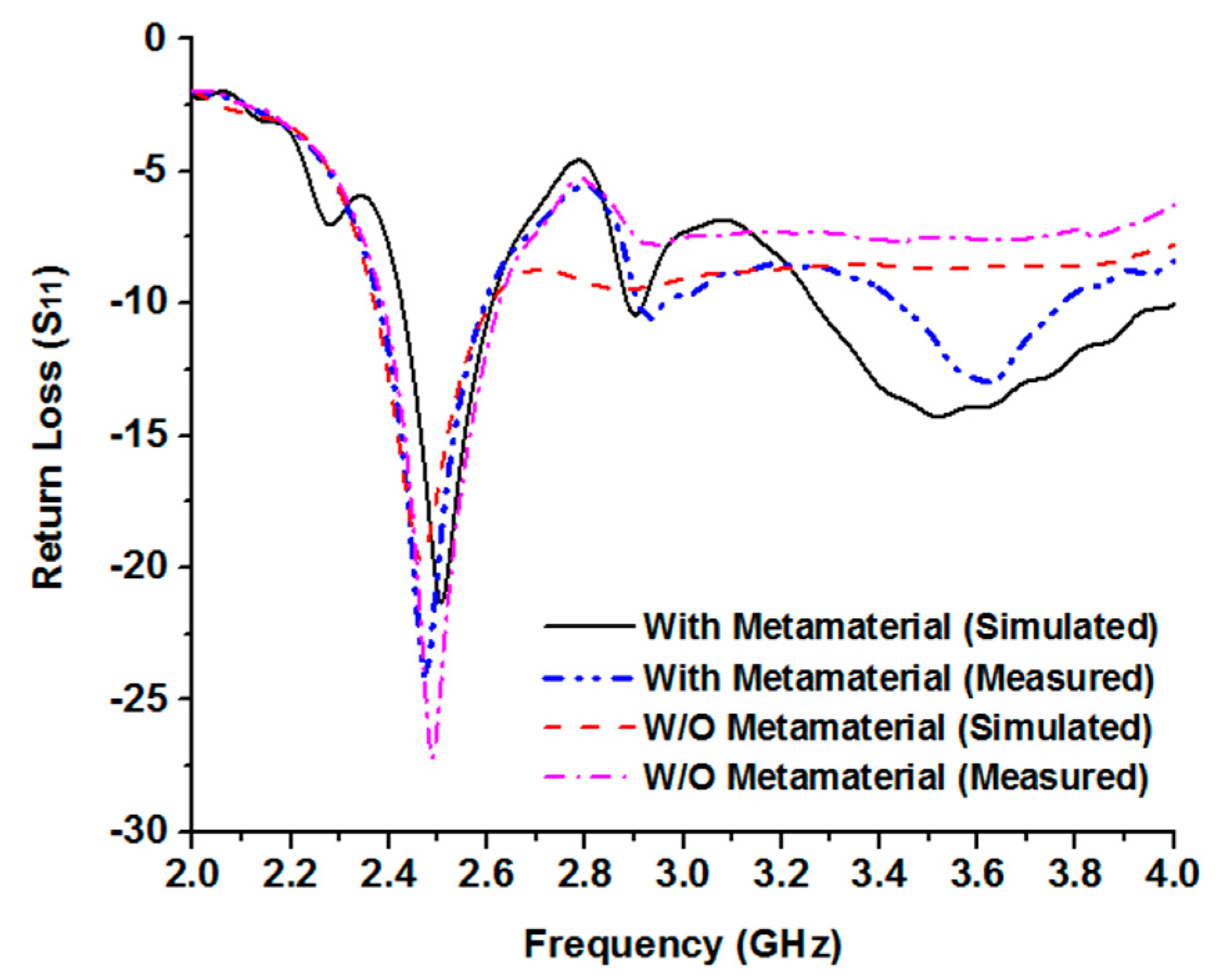

The coupled split-rings were employed on the top-layer to achieve the multi-band response in the C-band (4–8 GHz) applications. In 8, a uniplanar left-handed metamaterial was reported for the terrestrial microwave links. The design configuration was realized on a 1.57 mm thick low-loss Rogers 5880 substrate to achieve the double negative metamaterial characteristic in the intended frequency band. In 7, a miniaturized metamaterial structure with dimensions 5.5 × 5.5 mm and an EMR of 8 was proposed for C-band microwave applications. The metamaterials applications include but are not limited to: mutual coupling suppression in MIMO elements 1, RF shielding 2, Antenna Radar Cross Section (RCS) reduction 3, antenna gain/directivity enhancement 4, invisibility cloaking 5, and miniaturized sophisticated structures for the RF sensing applications 6.ĭifferent metamaterial structures are reported in the existing literature to achieve negative permeability, negative permittivity by employing different design configurations. In electromagnetic and microwave applications, materials are chosen based on dielectric properties. The unique electromagnetic characteristic in metamaterials can be attained by employing various geometrical structures instead of chemical accounts. These materials are usually a periodic arrangement of sub-wavelength elements. A Russian physicist Victor Veselago provided a new theoretical explanation of a material that is different from present materials in nature. These characteristics are not typically observed in the existing natural materials.

The electromagnetic-based metamaterials are a new class of composite materials with extraordinary electromagnetic characteristics of negative permeability, negative permittivity, negative refractive index. The geometry of the radiation structure generally depending upon the operating frequency band. The metamaterial structures usually belong to modern physics and play an essential role in scattering the incoming waves in a particular direction.

Metamaterials are getting significant attention in the research community for the last few decades due to their unique electromagnetic characteristics. For its small dimension, NZI, high EMR, and frequency hopping characteristics through switching, this metamaterial can be utilized for multiband microwave applications, especially to enhance the gain of multiband antennas. Eight different combinations of the switching states provide eight different sets of multiband resonances within 2–18 GHz those give the flexibility of using the proposed MTM operating in various frequency bands. The frequency hopping characteristics of the proposed MTM is investigated by open and short-circuited the three outer rings split gaps by using three switches. The MTM offers a high effective medium ratio (EMR) of 15.1, indicating the design's compactness. The array performance of the MTM is also evaluated by using 2 × 2, 4 × 4, and 8 × 8 arrays that show close resemblance with the unit cell. The simulated S 21 of the MTM unit cell is compared with the measured one and both show close similarity. The equivalent circuit is designed and modeled in Advanced Design System (ADS) software. It shows negative permittivity, near-zero permeability, and near-zero refractive index in the vicinity of these resonances. The MTM provides four major resonances of transmission coefficient (S 21) at 2.48, 4.28, 9.36, and 13.7 GHz covering S, C, X, and Ku bands. The unit cell of proposed MTM is initiated on a low-cost FR4 substrate of 1.5 mm thick and electrical dimension of 0.06λ × 0.06λ, where wavelength, λ is calculated at the lowest resonance frequency (2.48 GHz). The meander line helps to increase the electrical length of the rings and provides strong multiple resonances within a small dimension. The metamaterial unit cell is a modification of the conventional square split-ring resonator in which the meander line concept is utilized.

In this paper, a meander-lines-based epsilon negative (ENG) metamaterial (MTM) with a high effective medium ratio (EMR) and near-zero refractive index (NZI) is designed and investigated for multiband microwave applications.


 0 kommentar(er)
0 kommentar(er)
